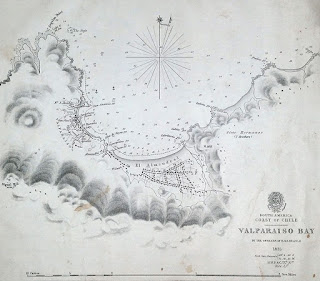Growing up in a small town and attending a two-room
schoolhouse as a child, I was fortunate to have some interesting, and
interested, teachers. One such was an older woman born a decade or so before
World War I who, along with teaching English, Math, Spelling and Geography, inspired
her pint-sized students with her avid interest in music. Having obviously
learned her repertoire at her parents’ knees, she animatedly played the piano
to accompany her singing of a host of songs from the Gay ‘90’s. All of which we
learned as well (and sing to this day). Our Miss Gliha would have loved the
collection of sheet music housed in the Collections Research Center at Mystic
Seaport.
There are over 1,500 pieces of sheet music at Mystic
Seaport, ranging in date from the War of 1812’s The Fearless Tar to the Little
Mermaid TV series in 1993. Most have been collected for their nautical content,
either in the lyrics of the song or the content of the illustrations on the
cover or both. Shown here are a few representations of themes included in the
collection. Click on the images to get a better view.
The Three Bells Polka was written in honor of Capt.
Creighton of the Glasgow Ship THREE BELLS. In 1854, the THREE BELLS was one of
three ships that rescued 500 passengers from the steamer SAN FRANCISCO.
Unfortunately, another 200 passengers were lost. Creighton received a medal and
$7,500 in cash from the U. S. Government for his efforts in rescuing the people
that he managed to take aboard. A polka seems an odd musical form to
commemorate such an incident, but Capt. Creighton (or at least his remembrance on paper) now lives on in the museum’s temperature
and humidity-controlled Collections Research Center.
 |
| MSM Accession # 1993.35.5 |
Music for Sit Down You’re Rocking the Boat was written by
William Jerome and Jean Schwartz, popular collaborators in the 1900’s and 1910’s.
The song title, best known for the song of the same name in the Broadway
musical, Guys and Dolls, is a completely different song, except for the refrain
“Sit down, sit down, sit down, sit down, sit down you’re rocking the boat!” The
1913 version seen here has to do with a young woman fending off the advances of
her sailor suitor.
 |
| MSM Accession # 2002.7.8 |
A very colorful cover appears on the music for The Ship I Love,
written in 1893 by Felix McGlennon and, as can be seen on the cover, “Sung with
immense success by Tom Costello.” The heroic Captain intones from the deck of
his sinking ship, “I’ll stick to the ship lads, you save your lives, I’ve no
one to love me, you’ve children and wives.”
He finishes the chorus with “But I’ll go down in the angry deep, with
the ship I love.”
 |
| MSM Accession # 2002.103.11 |
The number of pieces in the collection attests to the
popularity over time of sea-related emotions to either tug at the heart strings
of the public, or to entertain them with the farce and silliness. Either way,
we have been diligently scanning the collection and hope to have it online in
the near future if you wish to try your hand at playing and singing such greats
as The Midshipman’s Farewell or The Mermaid’s Cave.












